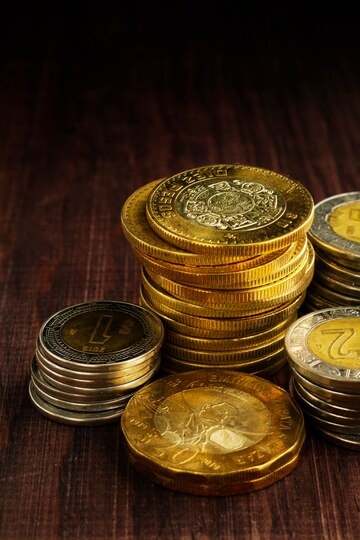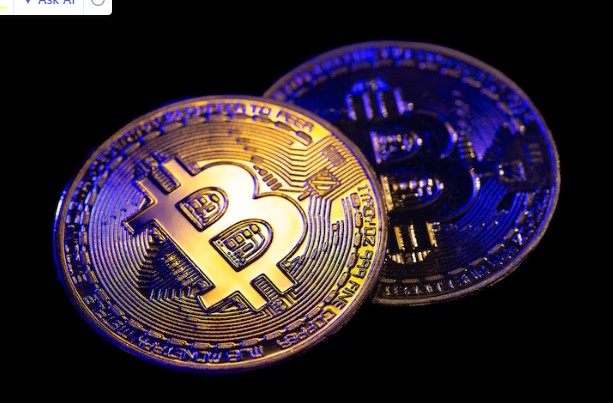What exactly is a financial bubble, and does the cryptocurrency market fit that definition? To answer that, we need to dive deeper into the concept of financial bubbles and assess the current state of the cryptocurrency landscape.
The term “cryptocurrency” has become synonymous with both massive profits and extreme risks. While Bitcoin and other digital currencies have made early adopters millionaires, they have also drawn skepticism from financial experts who warn that the market is overheated and may be in a bubble.
What is a Financial Bubble?
A financial bubble occurs when the price of an asset, be it stocks, real estate, or even cryptocurrencies, rises far above its intrinsic value due to excessive speculation. Bubbles are fueled by irrational exuberance—when investors drive prices up, not because of the asset’s underlying fundamentals, but because they believe they can sell it at a higher price later.
Classic examples of financial bubbles include the Dot-com bubble of the late 1990s, when internet companies with little to no profits saw their stock prices skyrocket, and the 2008 housing bubble, where real estate values reached unsustainable levels before crashing down.
The Rise of Cryptocurrencies
Bitcoin, the first cryptocurrency, was created in 2009, and since then, the world of digital currencies has expanded dramatically. With thousands of altcoins on the market, including major players like Ethereum, Ripple (XRP), and Binance Coin, cryptocurrencies have evolved from a niche technology into a global financial phenomenon.
The allure of decentralized, peer-to-peer digital currencies that operate without the need for traditional banks has attracted a wide range of investors. The potential for blockchain technology—the underlying framework of cryptocurrencies—to disrupt industries from finance to healthcare has added further excitement.
Yet, as prices of cryptocurrencies soared in recent years, many have wondered: are we witnessing a true financial revolution, or is it just another bubble?
Is Cryptocurrency Overvalued?
One of the main arguments for the cryptocurrency bubble theory is the rapid and often unpredictable increase in prices. Bitcoin, for instance, rose from under $1,000 in early 2017 to nearly $20,000 by the end of that year before plunging in value, only to surge again in 2021, reaching highs of over $60,000.
Such extreme volatility is unusual for traditional assets like stocks or bonds, and it points to the speculative nature of many cryptocurrency investments. Investors, both retail and institutional, may be pouring money into the market not because of the real-world utility of these assets, but simply due to the belief that prices will continue to rise.
Signs of a Potential Bubble in Crypto
Several factors indicate that cryptocurrency may be experiencing bubble-like conditions:
Speculative Buying
Many investors buy cryptocurrencies with little understanding of the technology or market, focusing instead on short-term gains. This speculative buying can inflate prices without a solid foundation in actual demand or usage.
Extreme Volatility
Cryptocurrencies are notorious for their wild price swings. While volatility is common in early markets, the extreme fluctuations in value suggest that market participants are driven more by emotion and hype than by rational analysis.
Fear of Missing Out (FOMO)
The psychological driver behind many bubbles, FOMO has taken hold in the crypto world. Investors see others making massive profits and rush to invest, even when they don’t fully understand the risks involved.
Hype-Driven Investments
The media and social media platforms have played a significant role in hyping cryptocurrencies, leading many to jump on the bandwagon in hopes of striking it rich. This herd mentality can drive prices far above their real value.
The Role of Institutional Investors
In recent years, institutional investors like hedge funds, private equity firms, and even large corporations have entered the cryptocurrency market. While institutional involvement can lend credibility to the market, it also brings more capital, which can inflate prices.
Is institutional investment a sign of genuine belief in the long-term potential of cryptocurrencies, or is it simply a way to capitalize on the hype? The answer likely lies somewhere in between.
Crypto vs Traditional Bubbles
To determine if the cryptocurrency market is in a bubble, it’s helpful to compare it to past bubbles. The Dot-com bubble, for example, saw tech companies with little substance attract massive investment, driven by the promise of the internet’s potential. Similarly, many cryptocurrencies with no clear use case have seen their prices soar due to hype.
However, unlike the Dot-com bubble, which burst when the market realized most of these companies wouldn’t deliver, blockchain technology is already proving its utility. The question is whether the current valuations reflect that utility—or are inflated by speculation.
Technological Innovation vs Speculation
One of the biggest challenges in assessing whether cryptocurrencies are in a bubble is distinguishing between genuine technological innovation and market speculation. Blockchain technology, which enables decentralized and secure transactions, is considered by many to be revolutionary. However, not all cryptocurrencies are created equal. Some may have real-world applications, while others are little more than speculative investments with no tangible value.
Could the Bubble Burst?
A cryptocurrency bubble could burst due to several factors, including increased regulation, technological challenges, or a sudden loss of confidence in the market. Regulatory crackdowns in major economies, such as the U.S. or China, could dampen enthusiasm for digital currencies. Additionally, technological setbacks, such as security breaches or scalability issues, could undermine confidence in blockchain technology.
What Happens When a Bubble Bursts?
If the cryptocurrency bubble were to burst, it would likely result in a rapid and dramatic drop in prices. Investors who entered the market late may suffer significant losses, and many speculative coins could become worthless. However, just like the Dot-com bust, where many companies collapsed but giants like Amazon emerged stronger, the core technology of blockchain may continue to thrive even if the bubble bursts.
Investor Behavior in a Bubble
During a bubble, investor behavior can become irrational. Many people buy into assets based on momentum, ignoring the fundamentals. This leads to inflated valuations and, eventually, a correction. Investors may also panic once prices start to fall, leading to a rapid sell-off, which accelerates the market’s decline.
The Future of Cryptocurrencies
Even if the market is currently experiencing a bubble, it doesn’t mean cryptocurrencies will disappear. The technology is here to stay, and digital currencies could play an essential role in the future of finance. However, it’s likely that many of the speculative coins will fade away, leaving only the most robust cryptocurrencies and blockchain projects.
How to Invest Wisely in Cryptocurrency
If you’re interested in investing in cryptocurrency, it’s essential to manage your risks. Diversification is key—don’t put all your money into one coin. Be prepared for volatility and ensure you’re investing money you can afford to lose. For long-term success, consider focusing on cryptocurrencies with strong use cases and solid development teams behind them.
Expert Opinions on the Crypto Bubble
Opinions on whether the cryptocurrency market is in a bubble are divided. Some financial experts believe that we’re witnessing a bubble that could burst at any moment, while others argue that the potential of blockchain technology justifies current valuations. It’s essential to weigh both perspectives and make informed investment decisions based on your research and risk tolerance.
Conclusion
So, is cryptocurrency in a bubble? The answer is complicated. While there are clear signs of speculative mania, the underlying technology behind cryptocurrencies offers real-world value. Whether the current valuations are sustainable or not remains to be seen, but one thing is clear: cryptocurrencies and blockchain technology are here to stay. The key for investors is to navigate the market wisely, stay informed, and be prepared for both the highs and the inevitable lows.
FAQs
1. What is a bubble in the cryptocurrency market?
A bubble occurs when the price of a cryptocurrency becomes excessively inflated due to speculative buying, far exceeding its intrinsic value.
2. What causes cryptocurrency prices to rise rapidly?
Cryptocurrency prices rise rapidly due to speculation, media hype , investor enthusiasm. Market demand driven by the “Fear of Missing Out” (FOMO).
3. How do you know if cryptocurrency is in a bubble?
Signs of a bubble include extreme price volatility, speculative buying, and prices far exceeding the actual utility of the cryptocurrency.
4. Can cryptocurrency recover after a bubble bursts?
Yes, while speculative cryptocurrencies may collapse, those with strong use cases and solid technology can recover and continue to grow.














